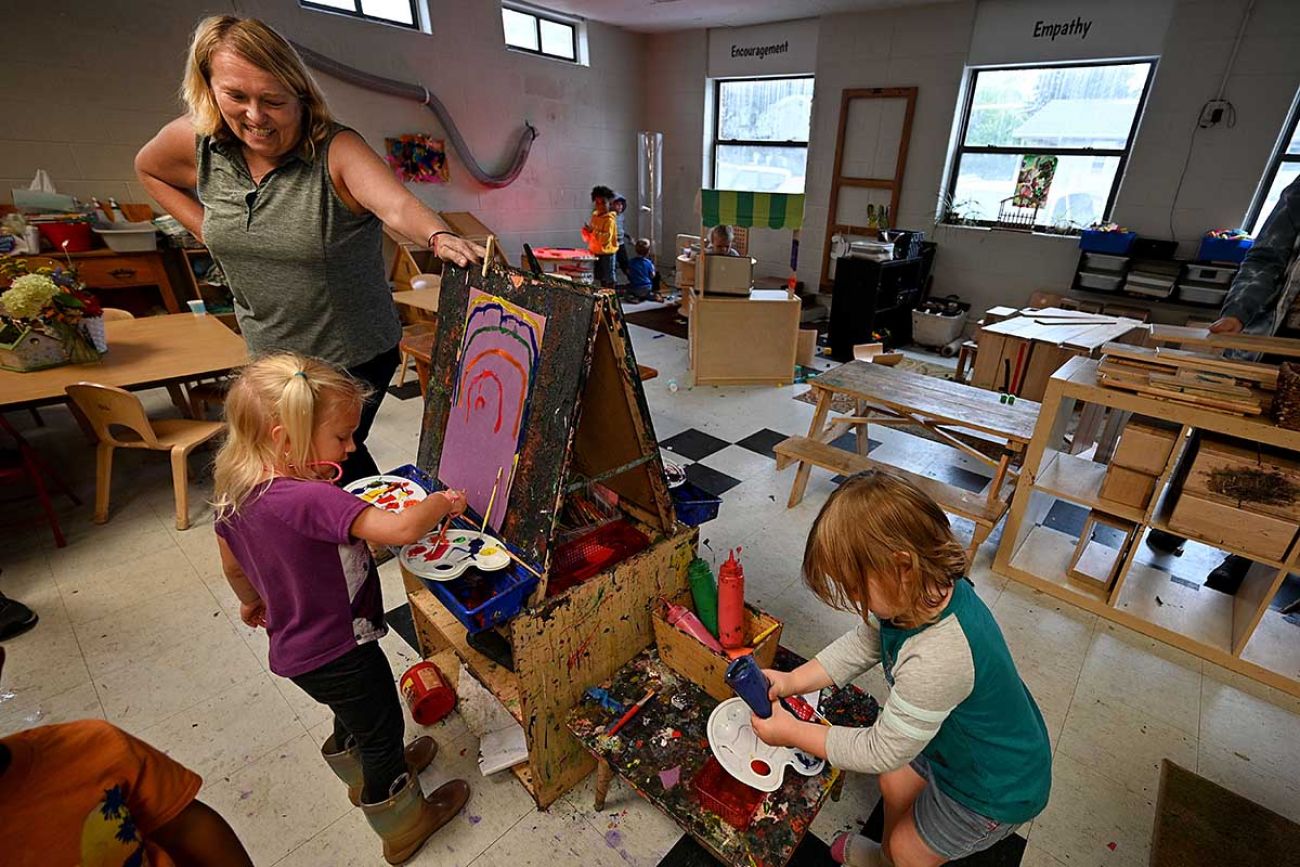Child care as economic development? You bet. $1.4B in aid coming to Michigan

CHARLOTTE — Public policy advocates have argued for years that Michigan should do more to help provide child care to allow more people to work.
That equation is clear in Eaton County, where workers have found fewer choices as they scramble to find safe, affordable child care that would allow them to work themselves.
Cynthia Heinson, 62, cares for two grandchildren, who both attend the Maple Valley schools in nearby Vermontville. But when that district closed its child care facility over staffing shortages, Heinson had to search all over because the village of about 700 people only has one other daycare center.
Related:
- Rising wages, few workers: A small town in Michigan adjusts to the new economy
- ‘Labor shortages are not going away’ in Michigan. Is automation the answer?
If she couldn’t, she said she was going to stay home, lowering her work hours so much she wouldn’t qualify for health insurance from her employer.
“You have to work your schedule around other caregivers,” Heinson told Bridge Michigan. “You better have relatives.”
Now, both Democratic Gov. Gretchen Whitmer and the Republican-led Legislature have agreed on an infusion of $1.4 billion in aid to shore up the child care system in Michigan.
The money comes from the federal government’s COVID-19 relief plan. Among other things, it will allow another 105,000 children to receive free or low-cost childcare by expanding income eligibility from $49,000 per year for families of four, up from $34,450.
Michigan currently has the ninth lowest labor force participation rate in the country and it has had one of the lowest child care subsidies as well, with fewer people qualifying for it than in most other states.
Childcare costs in Michigan averaged nearly $10,000 a year per child before the pandemic, but jumped to $15,000, according to data from the Center for American Progress.
That has caused some to stay home and employers who need workers have been advocating for more state assistance for child care.
Betsey Stevenson, a University of Michigan economist who was chief economist for the U.S. Department of Labor in the Obama administration, said child care is a crucial piece of the economy and the now-growing recovery.
In addition to the money already approved by Congress for COVID-19 relief that is in the Michigan budget, more money for child care is anticipated if President Joe Biden’s social safety net legislation — the Build Back Better — plan is approved. It’s currently being debated in Congress.
“If we want to keep parents in the workforce, if we want to keep kids out of poverty, we've got to make sure child care is affordable,” Stevenson said.
In Charlotte, D’Lynn Smith operates the Acres of Play child care center. Although some of her staff has left in recent months to take better paying jobs outside of child care, she said she could not afford to match the pay because she felt she couldn’t raise rates on parents.
That link between the cost of child care and the low wages must be addressed, Stevenson said.
“You don't make child care affordable by having people work for next to nothing in child care. We've got to do it through government subsidies."
For Smith, that money cannot come soon enough. She has had high levels of turnover and lost workers to higher-paying jobs. And she said she feels she cannot raise rates on families or boost wages from the $12 an hour she pays for starting teachers with experience.
“We need (the assistance.) We need it now, not in December,” Smith said.
Smith has applied for a $50,000 grant that could come in January. It will bring relief: she said each of her 10 employees will get a $1,000 bonus provided by federal stimulus funds. And she’ll be able to pay her workers more, a move that could reduce staff churn.
She also hopes the increase in subsidies will allow more of her families to qualify; just nine of the facility’s 72 children currently qualify, she said.
The money flowing into child care centers in Michigan includes $800 million in direct payments to providers, $158 million to increase the size of payments for those parents who qualify for the aid, $117 million to extend enrollment and $108 million to allow more people to get the aid.
All of the changes last through the 2023 fiscal year.
Heinsen, the grandmother, said the need for change is important and necessary to help more people get the child care they need. She also acknowledged it’s a lot of money.
“I hope that makes a difference and it’s not wasted,” she said.
Business Watch
Covering the intersection of business and policy, and informing Michigan employers and workers on the long road back from coronavirus.
- About Business Watch
- Subscribe
- Share tips and questions with Bridge Business Editor Paula Gardner
Thanks to our Business Watch sponsors.
Support Bridge's nonprofit civic journalism. Donate today.
See what new members are saying about why they donated to Bridge Michigan:
- “In order for this information to be accurate and unbiased it must be underwritten by its readers, not by special interests.” - Larry S.
- “Not many other media sources report on the topics Bridge does.” - Susan B.
- “Your journalism is outstanding and rare these days.” - Mark S.
If you want to ensure the future of nonpartisan, nonprofit Michigan journalism, please become a member today. You, too, will be asked why you donated and maybe we'll feature your quote next time!




